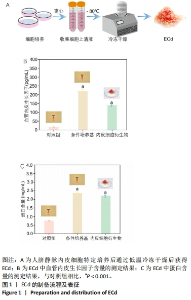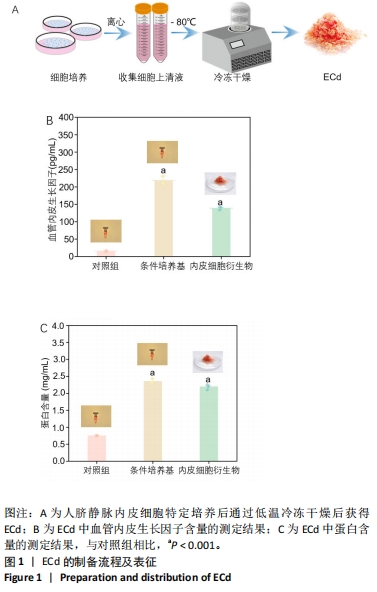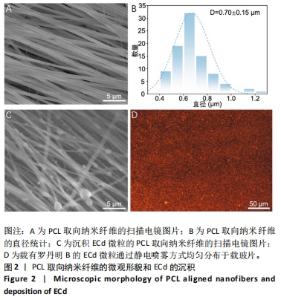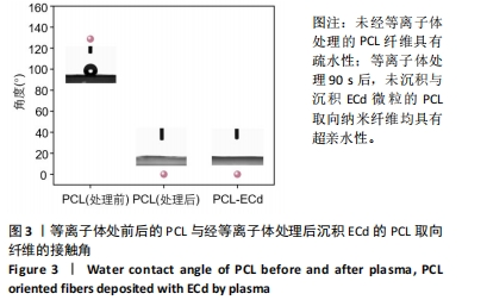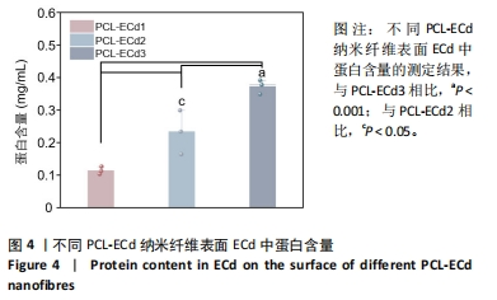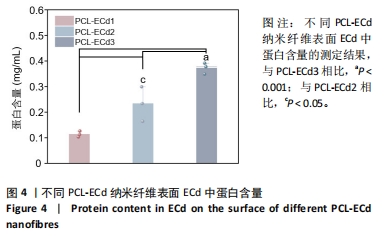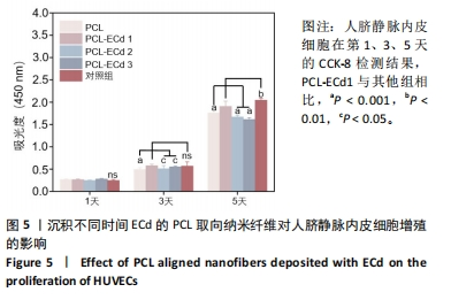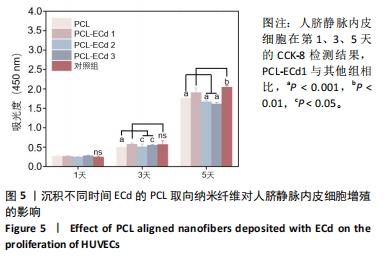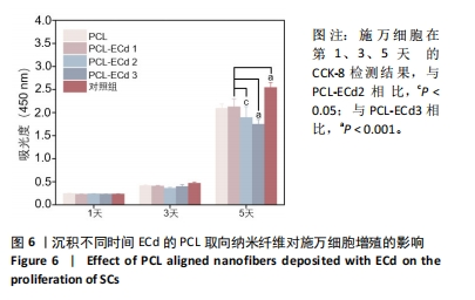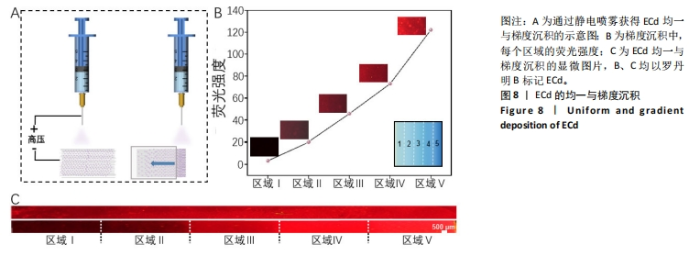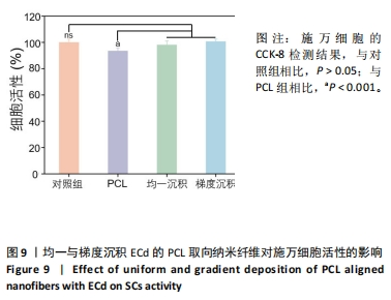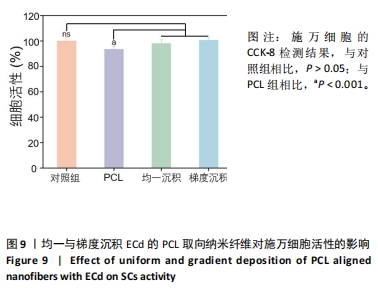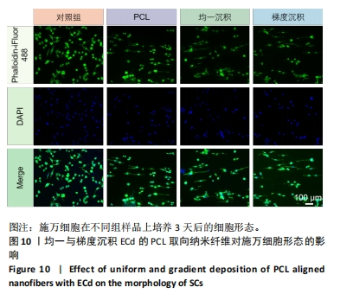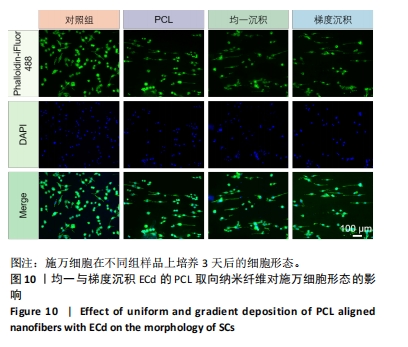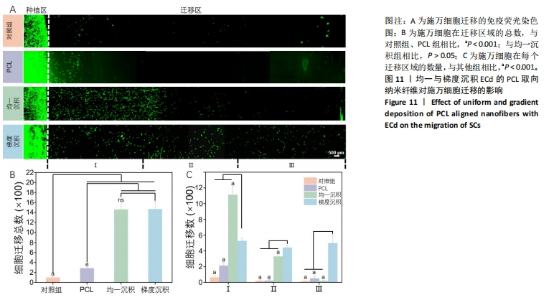| [1] |
Sun Xianjuan, Wang Qiuhua, Zhang Jinyi, Yang Yangyang, Wang Wenshuang, Zhang Xiaoqing.
Adhesion, proliferation, and vascular smooth muscle differentiation of bone marrow mesenchymal stem cells on different electrospinning membranes
[J]. Chinese Journal of Tissue Engineering Research, 2025, 29(4): 661-669.
|
| [2] |
Zhao Shuai, Li Dongyao, Wei Suiyan, Cao Yijing, Xu Yan, Xu Guoqiang.
Biocompatibility of poly(vinylidene fluoride) piezoelectric bionic periosteum prepared by electrospinning
[J]. Chinese Journal of Tissue Engineering Research, 2025, 29(4): 730-737.
|
| [3] |
Wu Chen, Jiang Jiahui, Su Dou, Liu Chen, Ci Chao.
Decellularized skin matrix/polyurethane blended fibrous scaffolds promote repair of skin defects in rats
[J]. Chinese Journal of Tissue Engineering Research, 2025, 29(4): 745-751.
|
| [4] |
Zhang Yu, Xu Ruian, Fang Lei, Li Longfei, Liu Shuyan, Ding Lingxue, Wang Yuexi, Guo Ziyan, Tian Feng, Xue Jiajia.
Gradient artificial bone repair scaffold regulates skeletal system tissue repair and regeneration
[J]. Chinese Journal of Tissue Engineering Research, 2025, 29(4): 846-855.
|
| [5] |
Liu Xiaojun, Shang Yuqing, Guan Wenchao, Xu Linlin, Li Guicai.
Oriented electrostatically spun polycaprolactone/silk fibroin scaffold loaded with calcium titanate promotes peripheral nerve regeneration
[J]. Chinese Journal of Tissue Engineering Research, 2025, 29(28): 6070-6082.
|
| [6] |
An Jiangru, Zhang Jinyi, Wang Qiuhua, Yang Yangyang, Wang Wenshuang, Zhang Xiaoqing.
Mesenchymal stem cells combined with polycaprolactone-hyaluronic acid electrospinning membrane in repair of endometrial injury
[J]. Chinese Journal of Tissue Engineering Research, 2025, 29(16): 3369-3379.
|
| [7] |
Li Yonghang, Li Wenming, Yan Caiping, Wang Xingkuan, Xiang Chao, Zhang Yuan, Jiang Ke, Chen Lu.
Critical bone defect repaired with anti-fibrosis and “H”-type core-shell bionic scaffold
[J]. Chinese Journal of Tissue Engineering Research, 2025, 29(16): 3420-3431.
|
| [8] |
Xu Rong, Wang Haojie, Geng Mengxiang, Meng Kai, Wang Hui, Zhang Keqin, Zhao Huijing.
Research advance in preparation and functional modification of porous polytetrafluoroethylene artificial blood vessels
[J]. Chinese Journal of Tissue Engineering Research, 2024, 28(5): 759-765.
|
| [9] |
Yin Tong, Yang Jilei, Li Yourui, Liu Zhuoran, Jiang Ming.
Application of core-shell structured nanofibers in oral tissue regeneration
[J]. Chinese Journal of Tissue Engineering Research, 2024, 28(5): 766-770.
|
| [10] |
Huang Lei, Wang Xiaoli, Wang Siming, Bao Xin, Zhou Xin, Wang Bendi.
Advance in preparation methods of bone tissue engineering scaffolds
[J]. Chinese Journal of Tissue Engineering Research, 2024, 28(29): 4710-4716.
|
| [11] |
Zhang Shuzhi, Qu Pengfei, Han Junquan, Wang Hong.
Research and application of electrospinning drug delivery systems containing traditional Chinese medicine
[J]. Chinese Journal of Tissue Engineering Research, 2024, 28(17): 2759-2765.
|
| [12] |
Wei Suiyan, Cao Yijing, Zhao Shuai, Li Dongyao, Wei Qin, Xu Yan, Xu Guoqiang.
Cytocompatibility of electrospun polyvinylidene fluoride piezoelectric bionic periosteum
[J]. Chinese Journal of Tissue Engineering Research, 2024, 28(15): 2351-2357.
|
| [13] |
Li Shuo, Hu Haolei, Yang Jie, Xu Tao, Yin Gang, Li Yi.
Repair of chronic tympanic membrane perforation by bone marrow mesenchymal stem cells-loaded high-porosity polycaprolactone-collagen nanofiber membrane scaffolds
[J]. Chinese Journal of Tissue Engineering Research, 2024, 28(15): 2371-2377.
|
| [14] |
Xu Jingzhi, Wang Wenbo, Sun Huiwen, Gu Yong.
In vitro experiment of stem cell engineered two-sided anisotropic electrospun membranes for promoting dural repair
[J]. Chinese Journal of Tissue Engineering Research, 2024, 28(10): 1540-1546.
|
| [15] |
Jiang Yu, He Feng, Liu Huan, Wu Ruixin.
Application of melt electrowriting technology in tissue engineering
[J]. Chinese Journal of Tissue Engineering Research, 2024, 28(10): 1606-1612.
|
